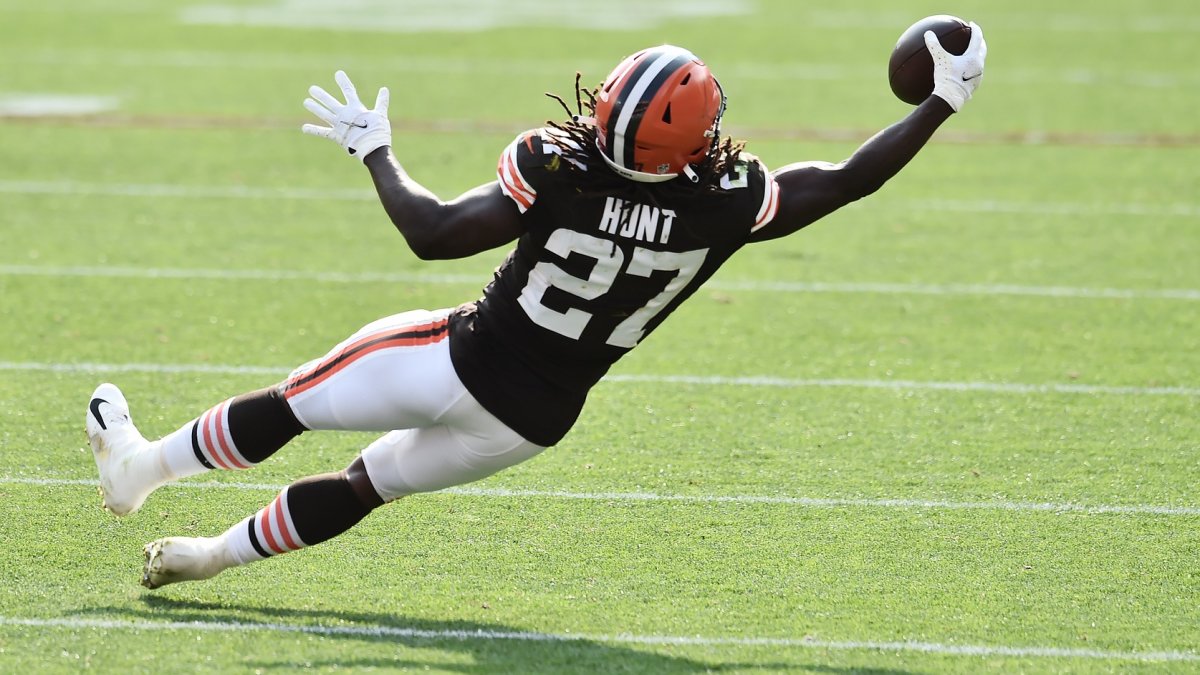Bye weeks bring a number of tricky situations to redraft fantasy football — rosters are stretched and thin, and few intriguing options are left on the waiver wire, leaving little room to maneuver outside of one pivotal play: a trade for a player on another roster.
NFL Week 5 officially marks the start of trade season, with fantasy owners already positioning themselves to handle bye weeks and get to the promised land. As easy as the premise is, this process can be one of the most frustrating parts of fantasy football.
Fantasy owners tend to overvalue their own players while undervaluing everyone else's. This leads to numerous two-for-one trade requests where two less-than-stellar pieces are offered for one or two studs on your roster. Sometimes the reject button cannot be pushed hard enough.
This phenomenon is actually a psychological concept called the endowment effect. This theory can be described as someone assigning extra value to a commodity simply because they currently own it.
Ideally, fantasy football trades should meet both owners' needs, and it is possible to make a worthwhile trade where both owners walk away better than they were before. Everyone tries to be the person who fleeces the unsuspecting or foolish owner in a fantasy league, but is this a long-term benefit to you? The old adage applies to all fantasy football trade requests: You can shear a sheep many times, but you can only skin him once.
This article aims to assign a dollar value to any player above replacement level for standard-structure leagues, i.e., leagues that start 1 QB, 2 RB, 2 WR, 1 TE and a flex. Both PPR and standard-scoring leagues are highlighted.
The calculation utilizes our rest-of-season fantasy projections from Weeks 5-16. We assign a value of zero to players who are just out of the realm of possible starts in a standard-structured league to provide us with a replacement-level basis of fantasy points for that position. Every player above replacement is then assigned a value based on the rest-of-season projections. This accurately takes into account both position scarcity as well as future projections.
The values can be used to line up both individual players in trades and 2-for-1 or 3-for-2 offerings, among others. This hopefully helps some fantasy owners come to a consensus on worthwhile trades for both parties. Typically, the side giving up the most players should expect to pay a premium of 5-10% over the stud player's cost.
Wide receivers may appear low in this calculation, but this reflects the replacement-level value of the position in fantasy football. After all, we are in the midst of an offensive explosion, with numerous mid- to late-round wide receiver picks leading the position in fantasy scoring. There are a few high-quality options at the top, but there are plenty of options in the tier or two below that have comparable value. As such, the position itself is priced down relative to the premium that exists at both running back and tight end.
We must also note that fantasy football is the only place where the quarterback position doesn’t matter. This is also reflected in the value rankings with cross positional trade evaluation made simple. Hit me up on Twitter with any questions or if you are looking for customized charts based on unique leagues and/or scoring.
QUARTERBACK




 © 2024 PFF - all rights reserved.
© 2024 PFF - all rights reserved.